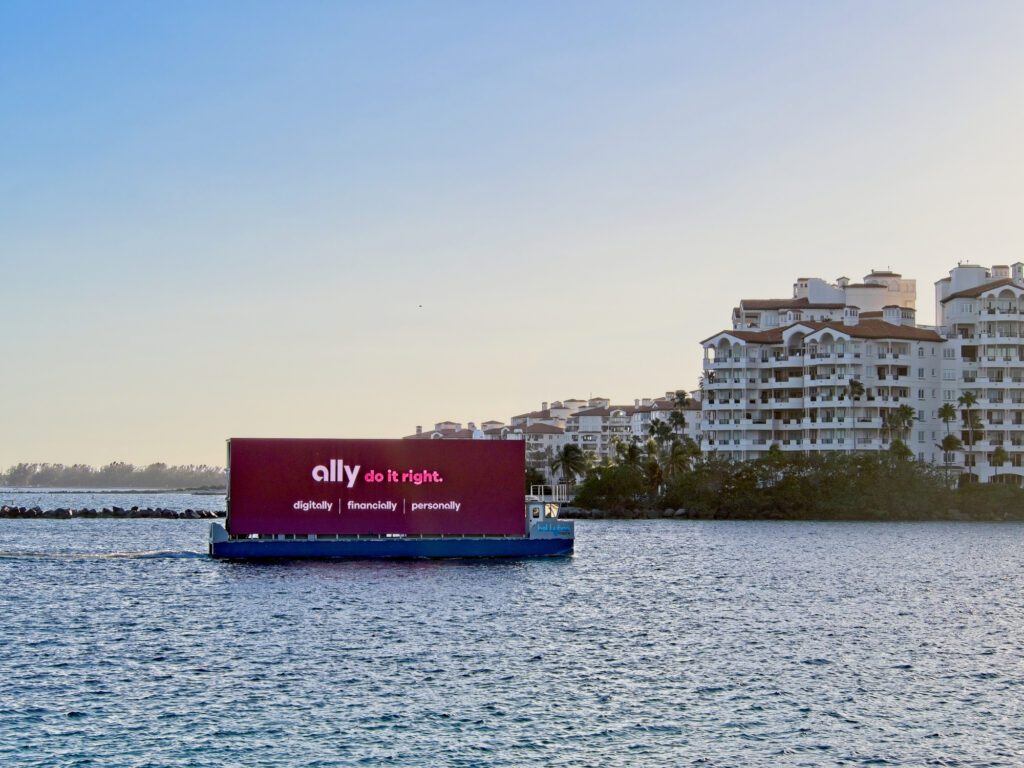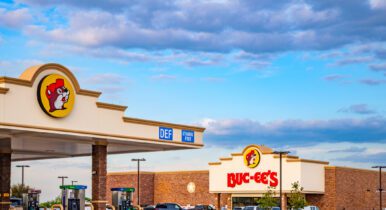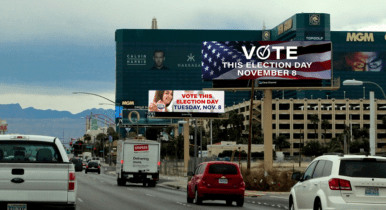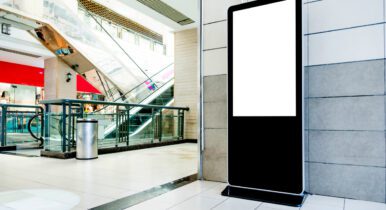Is It Time To Consider Digital Out of Home?

Much the same way that political marketers have been rubbing their hands in anticipation of the maturation of the CTV/OTT ad market, digital out of home (DOOH) was going through the same growing pains (finding scale, incorporating the right data, publishers developing approvals for political creative).
This cycle could present PACs and groups with the chance to take advantage of this ecosystem, which covers everything from screens at gas stations, bus stops and taxis to massive digital billboards next to major roads.
Katrina Moore, a sales director on the political/advocacy team at StackAdapt, said one of the reasons she’s excited for DOOH this cycle is the fact that the targeting has gotten better. What remains tricky, however, is navigating the publishers’ approval processes.
“Some will say, ‘I’ll accept anything that’s not a candidate ad [or] I’ll accept anything that’s a PSA ad, but not candidate,’” she said. “I think a lot of ad tech vendors do often have deals in place where they’ve already negotiated with the digital out-of-home vendors about who’s going to accept political, what kind of political will they accept so that you can just pop the deal in place and get going that way.”
She added: “It’s definitely a growing space and not everyone’s going to be comfortable taking digital home inventory, but I think it’s a great tactic — especially in use cases like you’re trying to hit a very specific demographic. [It’s also] great for, like, neighborhood targeting.”
Or maybe the group or PAC just wants to compliment a CTV buy that’s hitting homes in the area.
“The only issue is that digital out of home is a little bit harder to track,” Moore said. “But they are becoming more sophisticated in their ways with tracking , say, X number of people [saw the ad] based on foot traffic [in the area].”
Is there a state or region that’s most effective for DOOH? Like anything digital, it just depends on scale and what your goal is.
“The most common request I get is: ‘I want to do digital out of home ads in the capital, like, around the White House or Congress or something.’ Or maybe I want to focus on certain universities in the state, get the young vote out, or maybe just target a certain legislative district,” Moore said.
“We’ll pull everything we can when we do it, but sometimes people want to target based on venue type — maybe they only want to be on high-traffic digital billboards on the highway, for example, during rush hour,” she continued. “Those [orders] are pretty customizable depending on who you’re working with.”



